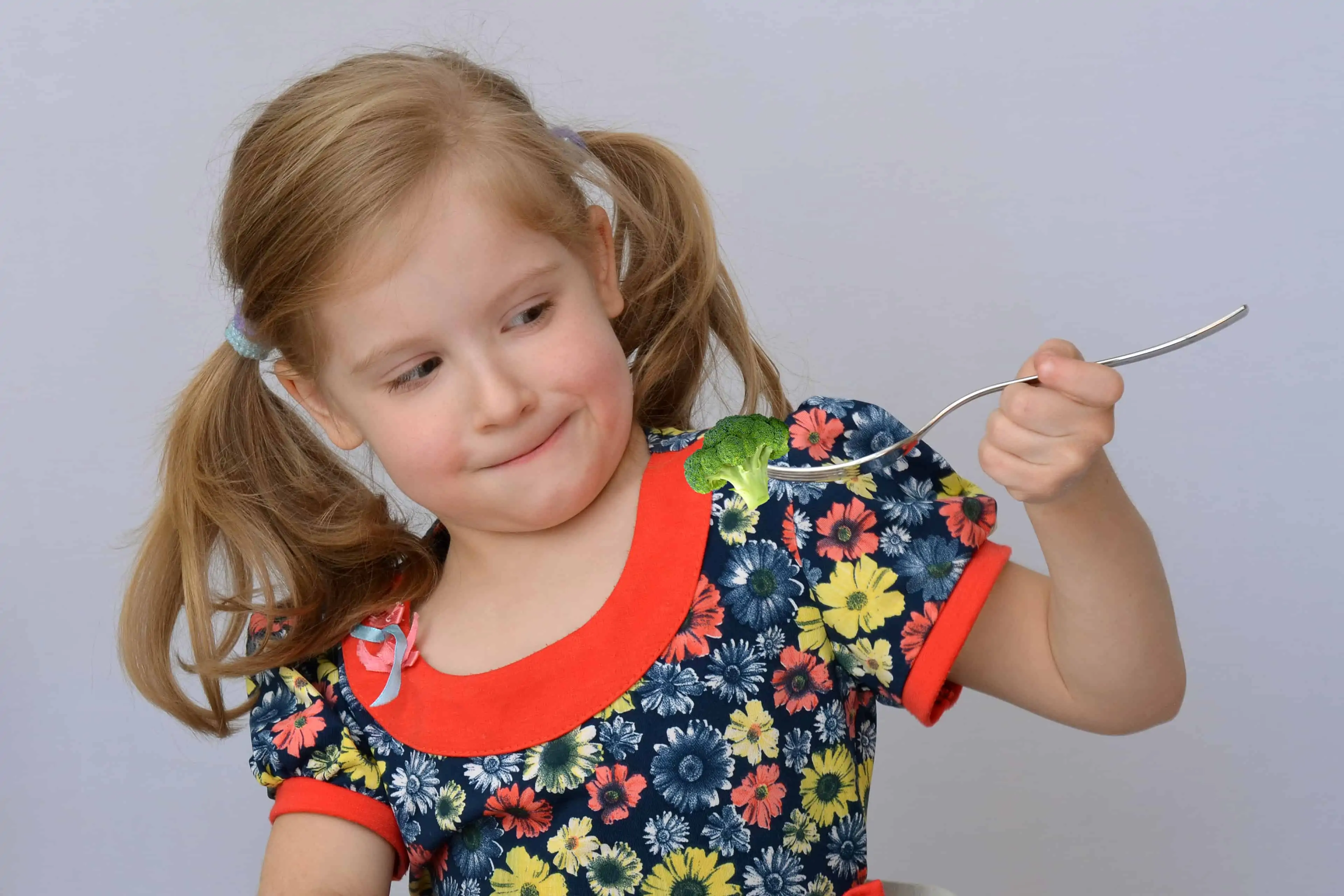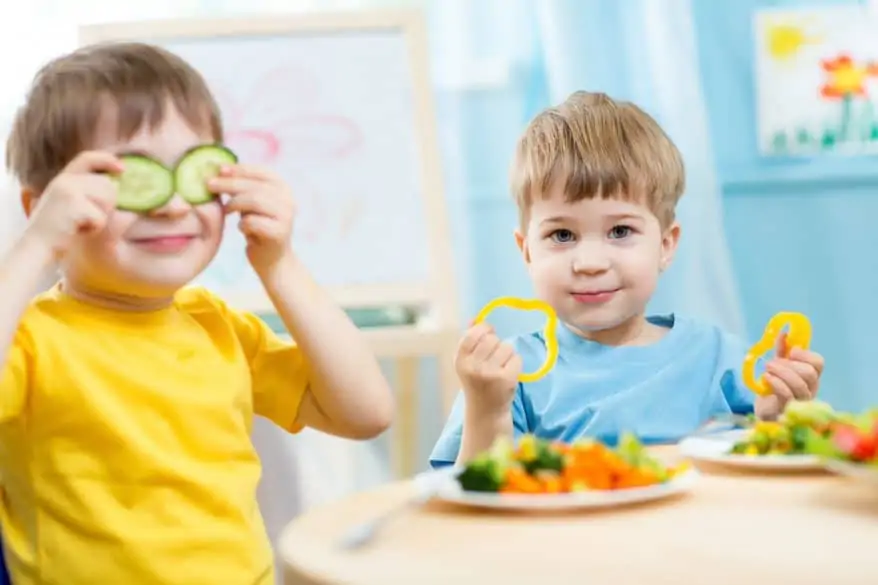As parents, we all worry when our children won’t eat or only eat certain foods. For some kiddos it seems like they could live off of chicken nuggets and ketchup with a peanut butter sandwich thrown in every once in awhile! Most kids go through phases of picky eating but some kids take it to the extreme and have very few foods they will eat. Have you ever worried about what type of picky eating is considered normal for a child? And when you might need to seek out a therapist for feeding therapy? I’ve got some answers for you! First, I will classify the difference between a picky eater vs. problem feeder and then give you some ideas of how to work with each type of child.
Picky Eater
- Decreased range or variety of foods that they will eat = 30 foods or more
- Foods lost due to “burn-out” because of food jag (eating the same food over and over) are usually re-gained after a 2-week break
- Able to tolerate new foods on a plate and usually can touch or taste a new food (even if reluctantly)
- Eats at least one food from most all food texture groups
- Frequently eats a different set of foods than the family but usually eats with the family
Problem Feeder
- Restricted range or variety of foods = less than 20 different foods
- Foods lost due to food jags are NOT re-acquired (i.e. the child ate mac and cheese every day for weeks but now refuses to eat it; even after a break)
- Cries and “falls apart” when presented with new foods
- Refuses entire categories of food textures (i.e. won’t eat anything crunchy)
- Adds new foods in 25 steps using Steps to Eating Hierarchy (see below)
Tips for Picky Eater
Here are some ideas to increase the amount and variety of what your child eats:
- Schedule meal and snack times -Be consistent with when you eat and limit snacks to one or two per day at set times. Do NOT allow your child to “graze” or eat whenever they want throughout the day.
- Limit juice, milk, and beverages to appropriate amounts – Kids can easily fill up on these drinks between meals so try offering water between meals and milk or juice with or even after a meal.
- Social modeling – Set a good example and sit down and eat with the child. Even having an older sibling who is eating the same thing can make a world of difference.
- Don’t offer too much at one time – We don’t want to overwhelm the child! Use a small plate, offer 3 foods at a time, and keep the food volume age appropriate.
- Let your child help plan and prepare meals – Children love to feel like they are contributing and preparation builds an appetite and teaches responsibility. Even young kids can help with stirring or adding ingredients.
- Use positive verbal reinforcement – Praise any positive behavior (i.e. “I like how you took a bite of that new food.” or “Good job touching your peas.”) and avoid constantly telling them to eat or other negative comments. We want eating to be a positive experience and not a battleground over food!
- Don’t be a short-order cook – Don’t get into the habit of making the child separate meals. Encourage them to stay at the table during the mealtime, even if they choose not to eat.
- Be creative – Present food in new and exciting ways: a bagel pizza with a face out of pepperoni, a shake made with yogurt, or different kinds of dipping sauces (kids love to dip!) can be a turning point for some kids.
Tips for Problem Feeder
For the kids that fit under the category “Problem Feeder,” adding new foods to their diet is going to be a lot more work. Many of these kids may end up needing to see an occupational therapist or speech therapist that specializes in feeding in order to make progress. Below I will include the Steps to Eating Hierarchy (adapted from pediatric psychologist, Dr. Kay A. Toomey) to give you an idea of what the process will look like. There are 5 basic steps that come before eating and sub-steps in each category.
Steps to Eating Hierarchy
Step 1: Tolerate
- Being in the same room
- Present at the table with food on the other side of the table
- Being at the table with food halfway across table
- Present at the table with food approximately in front of child
- Looks at food when directly in front of child
Step 2: Interaction
- Assists in preparation/set up of food
- Uses utensils or container to stir or pour food/drink
- Serves self with utensils or container to serve self
- Uses a napkin or other food to touch target food
Step 3: Smells
- Odor in room
- Smell at table
- Odor directly in front of child
- Leans down or picks up to smell
Step 4: Touch
- Fingertips
- Whole hand
- Chest/shoulder
- Top of head
- Chin/cheek
- Nose, underneath nose
- Lips
- Teeth
- Tips of tongue/full tongue
Step 5: Taste
- Licks lips, tongue licks food
- Bites off piece and spits out immediately
- Holds bit pieces in mouth for “x” seconds and spits out
- Bites, chews “x” times and spits out
- Partially swallows chewed food
- Chews, swallows with drink
- Chews and swallows independently
Finally: Eating!
Although these steps may seem overwhelming, this is what some kids need in order to make progress. And don’t under-estimate the power of food play for both picky eaters and problem feeders! Let kids get messy by finger-painting with pudding or driving cars through mashed potatoes. It helps them become more comfortable with food and breaks down fears they may have associated with certain foods.
Try out some of these tips and let me know how it goes!




